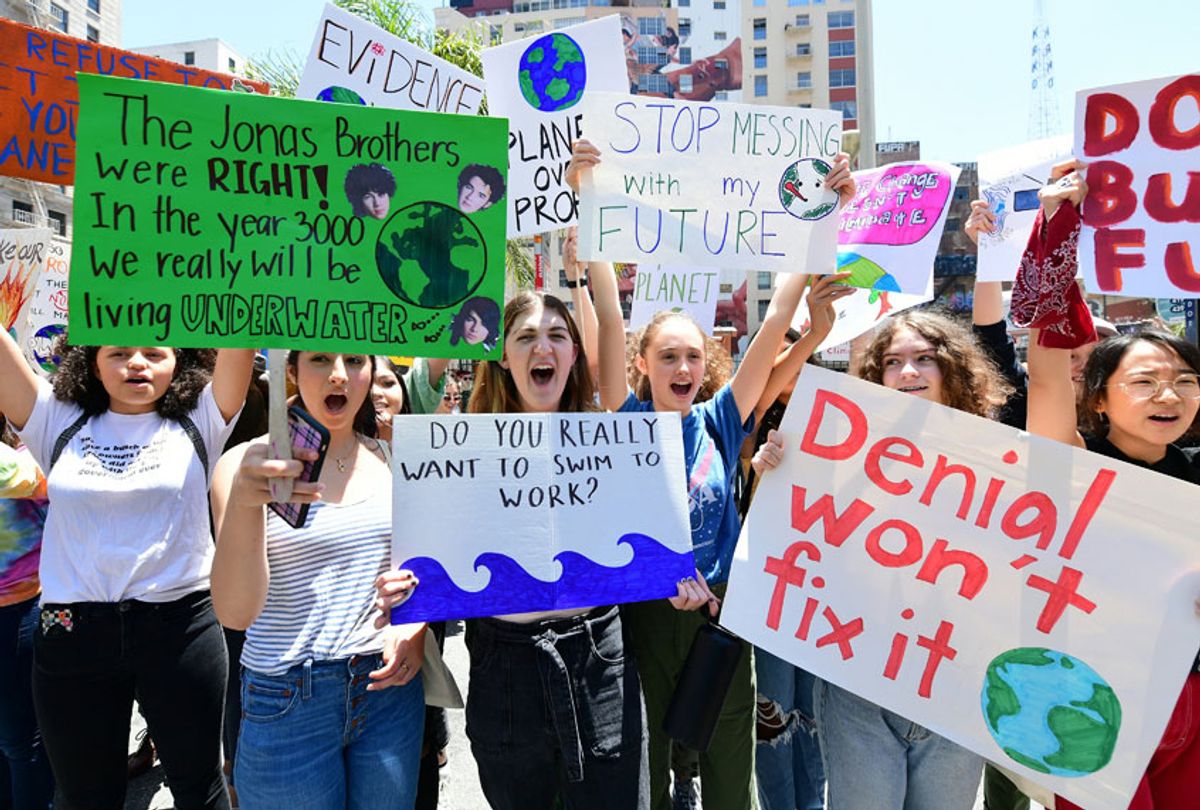In a May episode of Last Week Tonight With John Oliver, Bill Nye the Science Guy took a blowtorch to a miniature globe. It was an effort to startle Americans out of their complacency over climate change.
Whether on late-night TV or the nightly news, alarm is a recurring feature of climate change stories. Climate news is full of references to worsening wildfires, melting glaciers and rising seas.
However, this emphasis on doom and gloom can leave citizens feeling helpless and hopeless that they can make a difference.
“Threatening messages can capture the public’s attention and create a sense of urgency, leading to a heightened level of concern,” according to Climate Access, a non-profit research group. “But worry by itself is not an effective motivator for action, as it more often leads to resignation and hopelessness.”
Rethinking climate coverage
One approach that can better engage news audiences is a style of reporting known as solutions journalism.
Solutions journalism is reporting on ways that people and governments meaningfully respond to difficult problems. It is an alternative to just reporting on the problem itself.
Solutions stories are not fluffy, good news stories. Instead, they are hard news stories meant to highlight what has worked based on tangible proof.
The approach has been shown to increase interest in a subject, and to elevate the public’s sense of self-efficacy.
More facts ≠ more concern
No subject is arguably more timely for a solutions-oriented approach right now than climate change. The evidence could not be more clear. The planet has heated up steadily since the Industrial Revolution. Most of that warming has happened over the past four decades.
Despite all the evidence, mustering the political will to take climate change more seriously is a persistent problem. Why is that?
There are many reasons why politicians and the public have difficulty engaging with climate change. For example, climate change can feel distant, and there is often little immediate gratification for dealing with it.
Unfortunately, academics, governments and journalists have long assumed that citizens would take action if only they had more facts about climate change.
However, there is growing evidence that more facts do not translate into more concern. In a widely cited study, Dan Kahan, a professor of law and psychology at Yale Law School, and his colleagues found that people who had more knowledge about the science of climate change were not necessarily more concerned about it. Instead, lack of concern had much more to do with people’s personal beliefs and values.
Effective climate communication
Effective climate change communication challenges the idea that more facts produce more concern. Instead, effective climate change communication considers that tapping into people’s values is a far more effective strategy for engagement.
Good climate communicators ask the question: what is it about people’s experiences and circumstances that make them unlikely to engage with the climate crisis right now?
Effective climate communication also begins with the premise that climate audiences are not simply a monolithic whole, equally interested or disinterested in the climate crisis. Good climate communication calibrates messages of hope or alarm depending on who the messages are being communicated to.
Engaging by example
Solutions-oriented journalism on climate change provides examples of how ordinary people are making a difference. It illustrates how those changes are having a tangible, beneficial improvement on their lives.
For instance, climate stories can reflect locally sourced food and its health impacts, or the cost savings on gas from buying an electric vehicle.
This style is markedly different from the conventional doom-and-gloom approach to climate reporting, which builds on the standard of individual action. Instead, a solutions-oriented approach to climate news underscores the importance of collective action and political mobilization.
Climate as crisis
There is also an important role in environmental communication for what Steve Schwarze, a University of Montana communication studies professor, refers to as “environmental melodrama.”
Highly dramatic accounts of personal or political struggle are typically associated with the oversimplification of complex problems. But melodrama can also produce “productive forms of polarization,” according to Schwarze. For example, melodrama can galvanize a group of citizens around a common cause, or it can be deployed to point out who the villains in the story are.
It’s becoming increasingly clear that a one-size-fits-all approach to climate change communication is not sufficient for engaging news audiences.
Instead, effectively engaging the public on climate change requires a careful calibration of messages framed around solutions, the urgency of the climate crisis and individuals’ reasons for engaging or not engaging with the subject in the first place.
# # #
Kamyar Razavi, Television news producer & PhD candidate at Simon Fraser University, Simon Fraser University



Shares